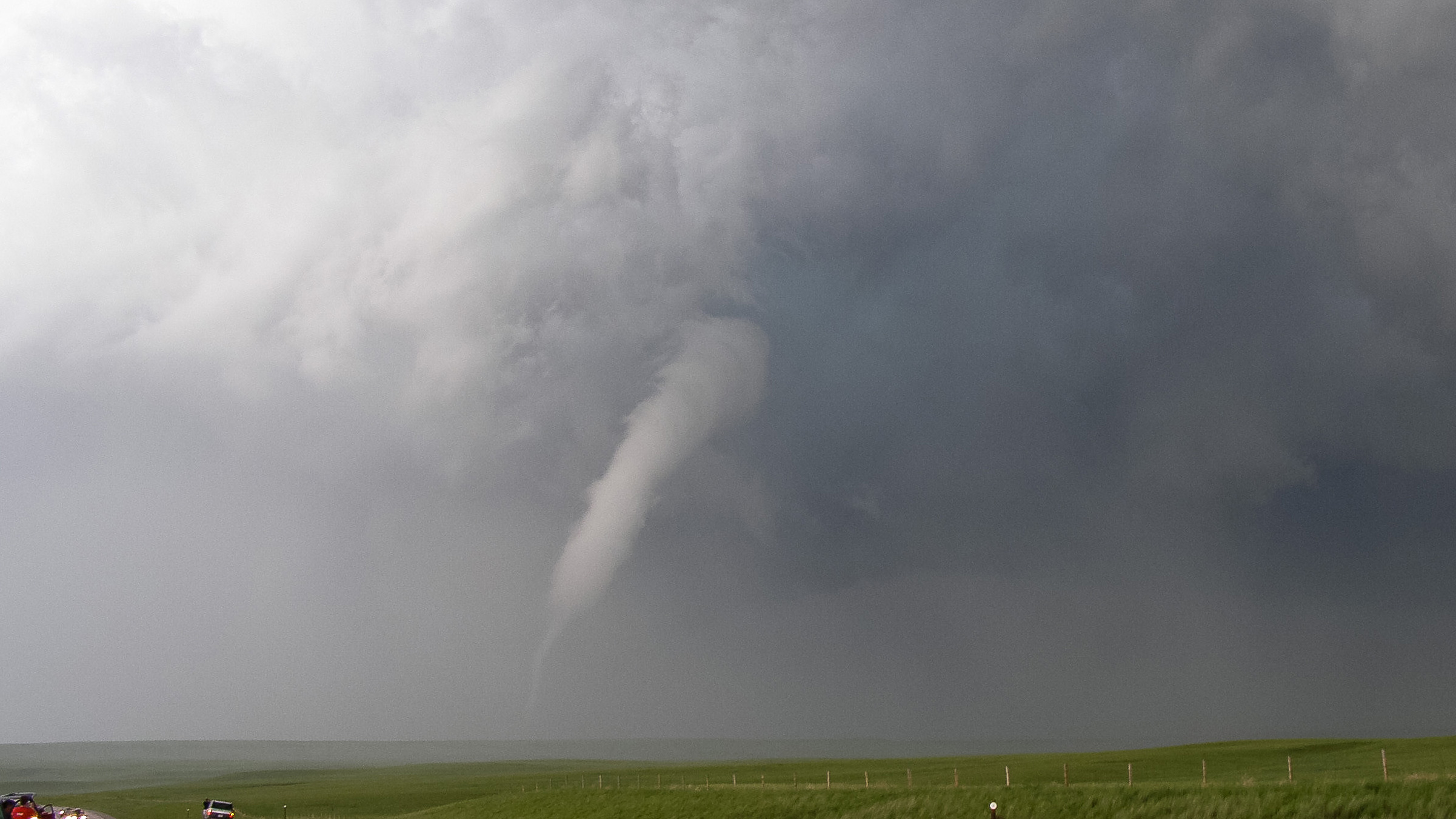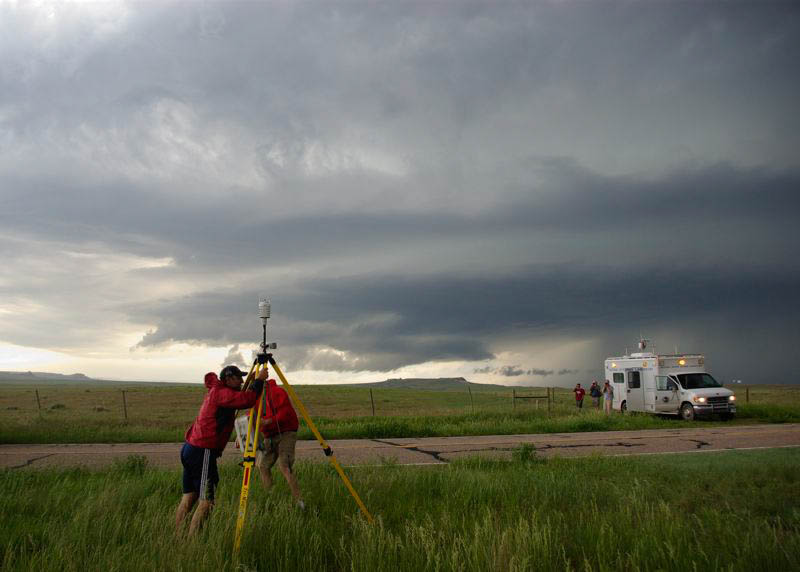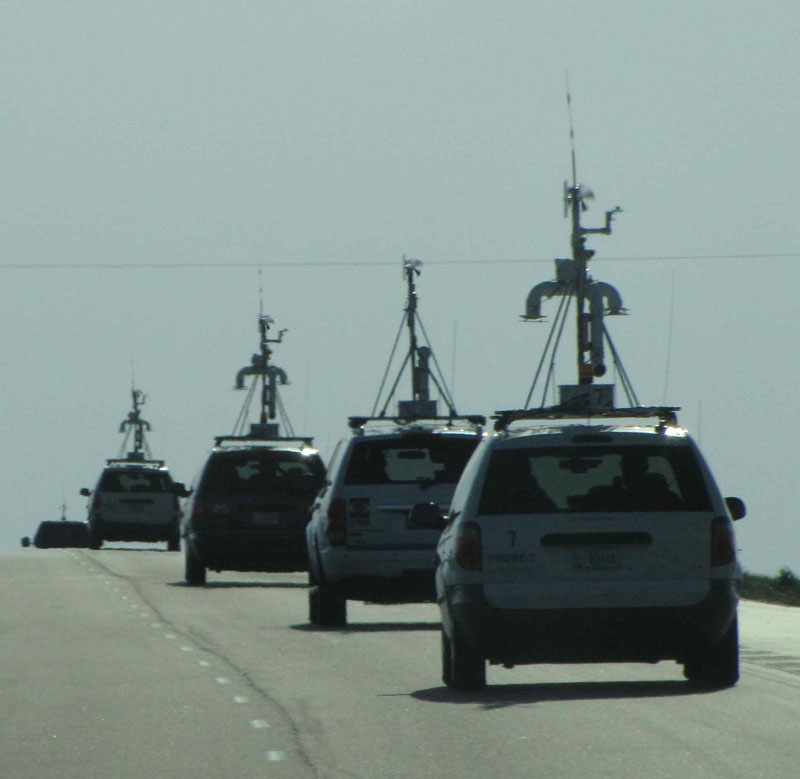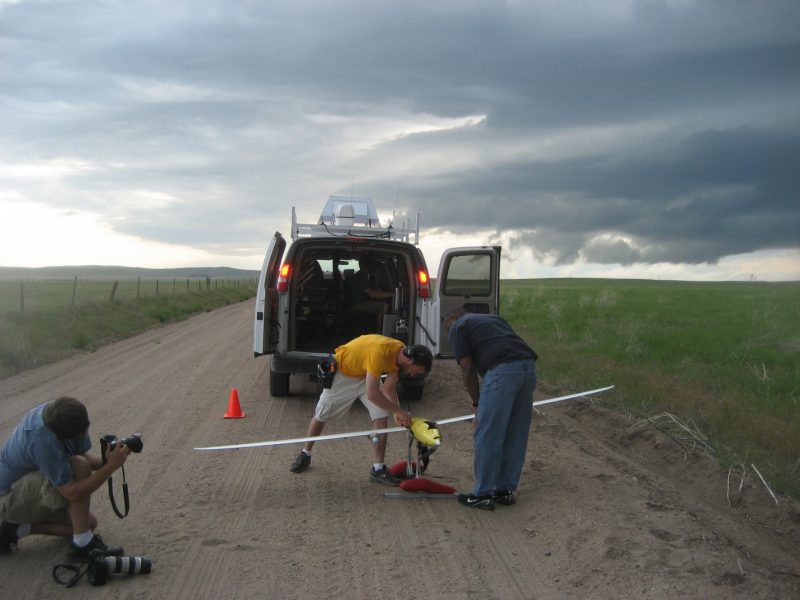
Dr. Brian Argrow, Professor of Aerospace Engineering Sciences at the University of Colorado and an expert in Unmanned Aerial Systems (UAS), will temporarily join NSSL to conduct collaborative research and help advance NOAA and NSSL observational and research capabilities. The six-month sabbatical begins Sept. 15 and extends through December 2014.
Argrow’s University of Colorado and University of Nebraska-Lincoln research team was the first to intercept supercells with a UAS. The team successfully probed the rear-flank downdraft of a tornadic supercell in northeast Colorado during the second Verification of the Origins of Rotation in Tornadoes Experiment in 2009. With NSSL support, in June 2013, a CU/UNL/NSSL team supported by NSSL flew a UAS in coordination with an NSSL mobile mesonet (vehicle with atmospheric instruments) to sample outflows from several supercells in northeast Colorado. The data collected during the week-long Airdata Verification and Integration Airborne Tempest Experiment (AVIATE) identified needs for follow-on research in a number of areas.
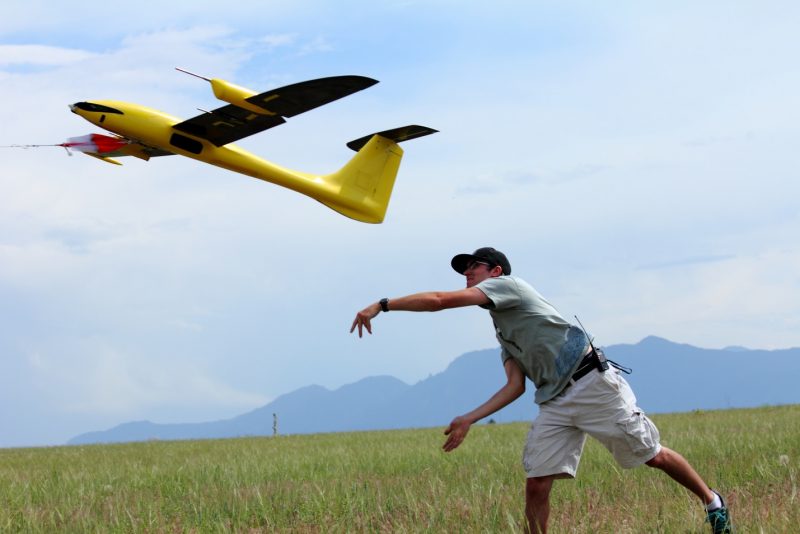
Argrow plans to refine the measurement of inertial winds from a small UAS (sUAS) optimized for low cost and to return high-quality thermodynamic and wind data. He also hopes to explore deployment strategies for coordinated sUAS-Mobile Mesonet deployments, and revisit the Mobile Mesonet design, specifically to better characterize how the vehicle induces velocities in the local wind field.
Because of their adaptability, potential ease of deployment, and potential low cost, sUAS are becoming increasingly important as instrument platforms for remote and in-situ observations in the lower troposphere for NOAA’s mission “To understand and predict changes in climate, weather, oceans, and coasts….”

